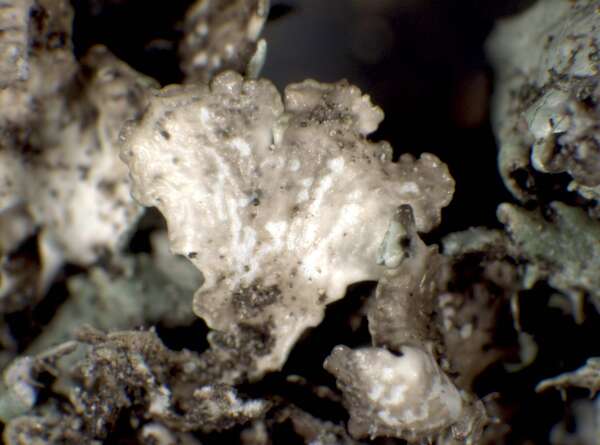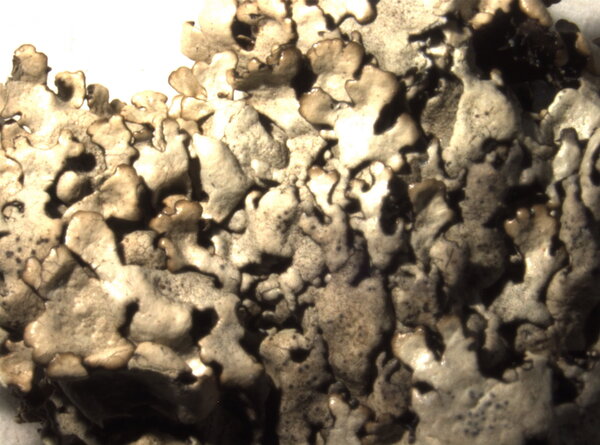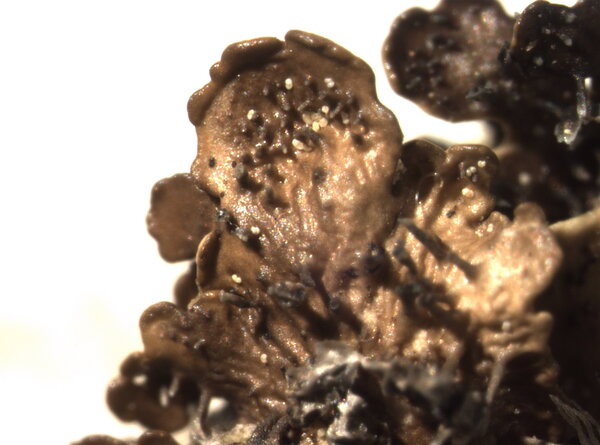Xanthoparmelia plittii (Gyeln.) Hale
Phytologia, 28: 488, 1974. Basionym: Parmelia plittii Gyeln. - Feddes Rep., 29: 287, 1931.
Synonyms:
Distribution: N - Lomb (Favero-Longo & al. 2023), VA (TO 3364), Lig (Giordani & al. 2009). C - Tosc (Giordani & al. 2009), Sar (Giordani & al. 2002b).
Description: Thallus foliose, rather loosely adnate, forming orbicular or irregular, up to 10 cm wide rosettes. Lobes, flat to slightly convex, separate to slightly imbricate, 1-4 mm wide, greenish yellow, grey yellow in central parts, shiny, emaculate, with abundant, initially globose, soon becoming cylindrical to subcoralloid, 0.08-0.15 mm thick, 0.1-0.5 mm tall isidia with syncorticate, brown tips. Lower surface pale to dark brown, with pale brown, simple or furcate, 0.2-0.6 mm long rhizines. Upper cortex paraplectenchymatous, with a pored epicortex, the cell walls with Xanthoparmelia-type lichenan; medulla white. Apothecia rather rare, lecanorine, substipitate, 2-7 mm across, with a brown disc and a smooth thalline margin. Epithecium brown; hymenium and hypothecium colourless. Epithecium brown; hymenium and hypothecium colourless. Asci 8-spored, thick-walled, the apex I+ blue with a wide, divergent axial body, Lecanora-type. Ascospores 1-celled, hyaline, ellipsoid, 9-10 x 4-5 µm. Pycnidia rare, black, immersed. Conidia bifusiform, 5-7 x c. 1 µm. Photobiont chlorococcoid. Spot tests: upper cortex K-, C-, KC- or KC+ yellow, P-; medulla K+ yellow to orange, C-, KC-, P+ orange. Chemistry: upper cortex with usnic acid; medulla with stictic acid (major) constictic, cryptostictic and norstictic acids (all minor).Note: on siliceous rocks, perhaps more widespread in Mediterranean Italy and in the Alpine dry valleys.
Growth form: Foliose, broad lobed
Substrata: rocks
Photobiont: green algae other than Trentepohlia
Reproductive strategy: mainly asexual, by isidia, or isidia-like structures (e.g. schizidia)
Commonnes-rarity: (info)
Alpine belt: absent
Subalpine belt: absent
Oromediterranean belt: absent
Montane belt: absent
Submediterranean belt: absent
Padanian area: absent
Humid submediterranean belt: absent
Humid mediterranean belt: very rare
Dry mediterranean belt: very rare
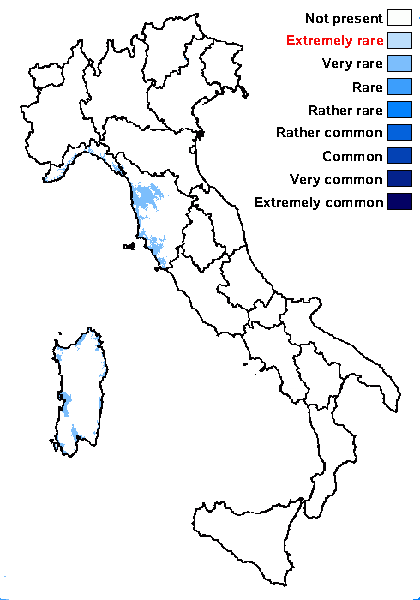
Predictive model
Herbarium samples
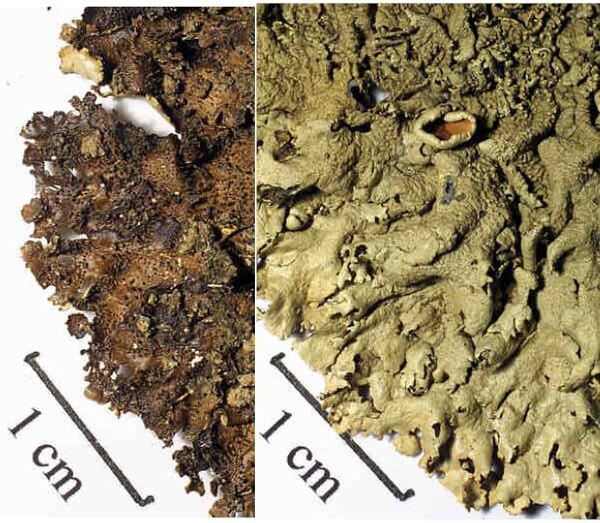

Felix Schumm – CC BY-SA 4.0
Image from: F. Schumm (2008) - Flechten Madeiras, der Kanaren und Azoren. Beck, OHG - ISBN: 978-3-00-023700-3
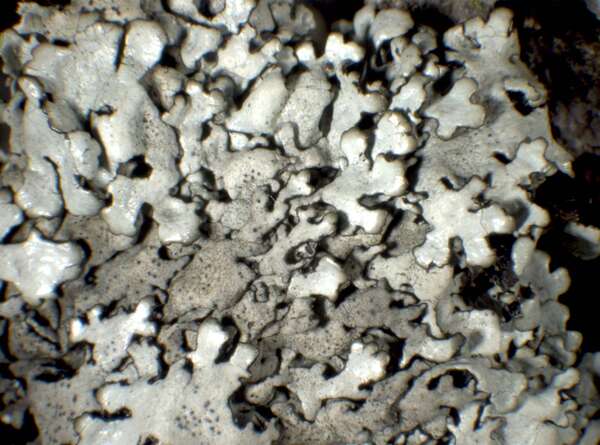

P.L. Nimis; Owner: Department of Life Sciences, University of Trieste
Herbarium: TSB (34830)
2002/02/13
specimen from Sardinia, det. J. Elix
Growth form: Foliose, broad lobed
Substrata: rocks
Photobiont: green algae other than Trentepohlia
Reproductive strategy: mainly asexual, by isidia, or isidia-like structures (e.g. schizidia)
Commonnes-rarity: (info)
Alpine belt: absent
Subalpine belt: absent
Oromediterranean belt: absent
Montane belt: absent
Submediterranean belt: absent
Padanian area: absent
Humid submediterranean belt: absent
Humid mediterranean belt: very rare
Dry mediterranean belt: very rare

Predictive model
| Herbarium samples |


Felix Schumm – CC BY-SA 4.0
Image from: F. Schumm (2008) - Flechten Madeiras, der Kanaren und Azoren. Beck, OHG - ISBN: 978-3-00-023700-3


 Index Fungorum
Index Fungorum
 GBIF
GBIF
